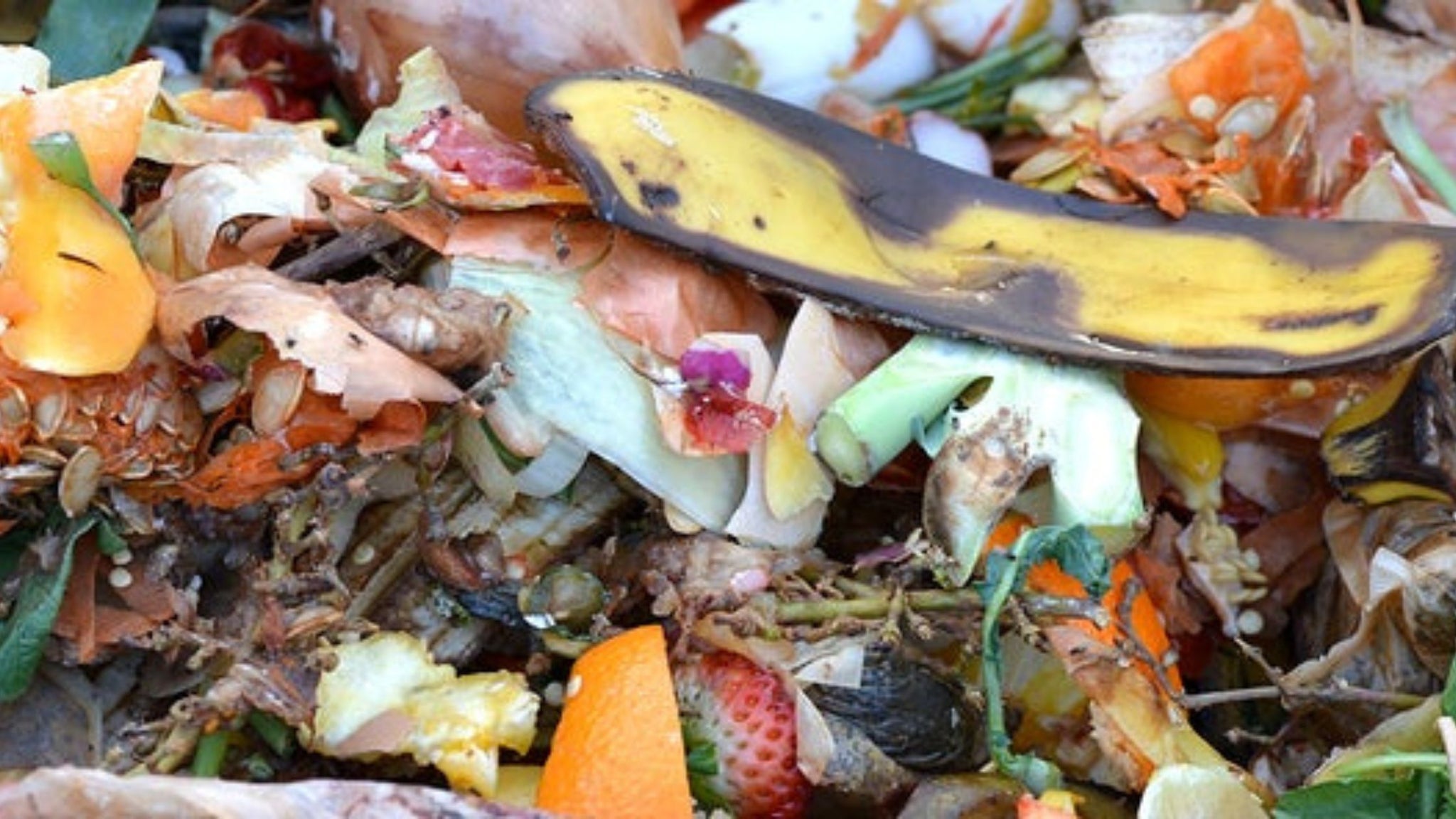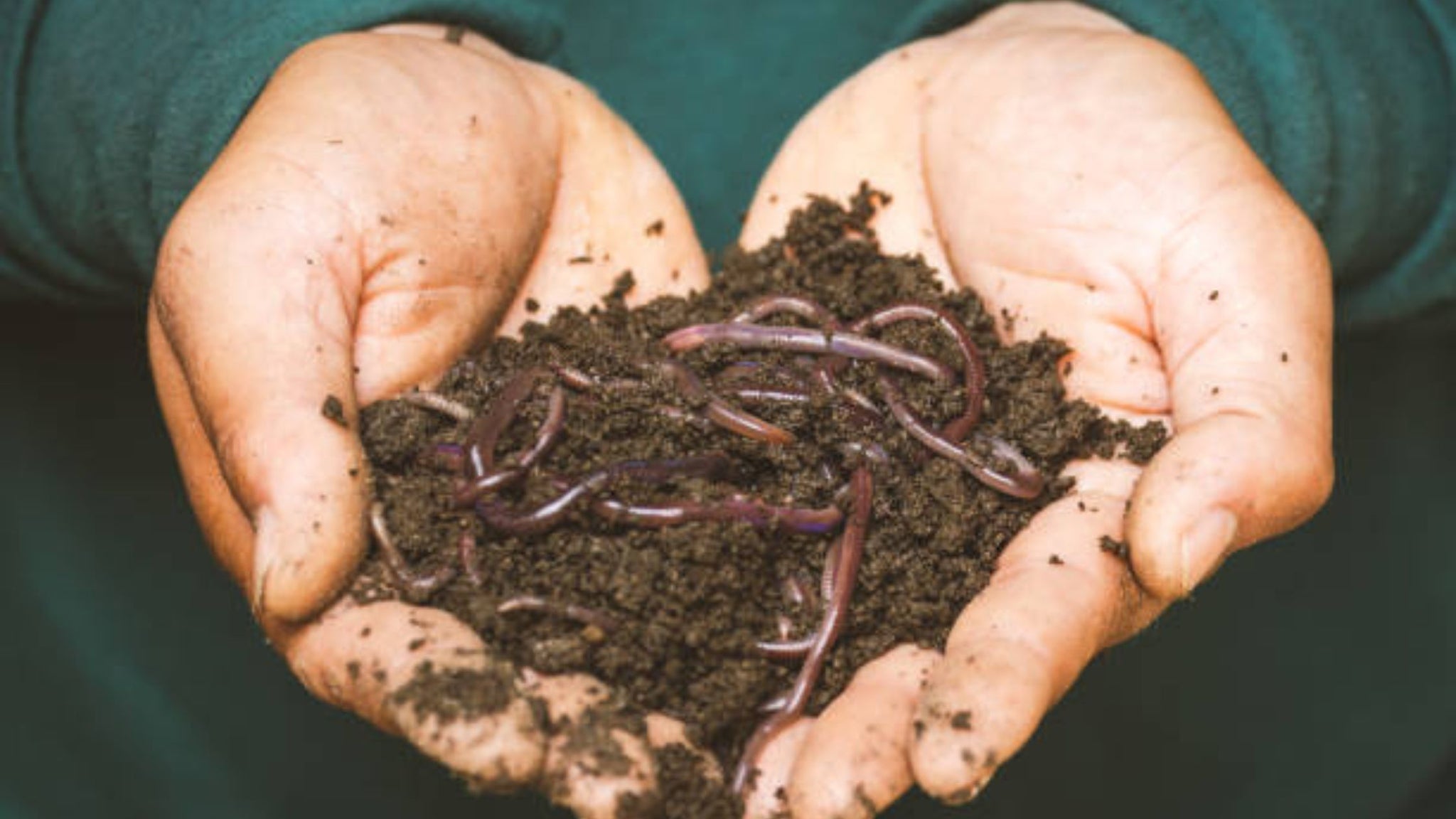The Dirt on How to Start Your Own Compost Pile

The single most important thing you can add to your garden is your own homemade nutrient rich compost. Great soil equals a great garden! Compost revitalizes nutrient poor soil and helps that soil retain moisture. Composting also keeps about one third of household waste from landfills. The beneficial organisms that break down household waste also continue to work in your garden, doing their magic silently improving your soil.
Composting is an environmentally beneficial garden practice that you can pass on to your children. My guess is that they probably can tell us a thing or two about this important and beneficial process.
The goal of composting is to create a dark brown light and fluffy humus or nutrient rich earth that you can add to all areas of your property. Humus is completely broken- down organic matter. This is primarily achieved by microorganisms such as bacteria, fungi, and protozoa. A healthy compost pile is made up of a ratio of 1/3 green and 2/3 brown material. The extra brown material bulks up the pile, allowing oxygen and water to penetrate which is very important. Without these the microorganisms cannot do their work. Proper decomposition relies on carbon rich brown materials such as dried leaves, wood ash, shredded paper, and cardboard. It also relies on nitrogen-based matter – chopped fruits and vegetables, green leaves, lawn clippings, decomposed chicken, horse, and cattle manure.

(Photo Taken By Green Action Center https://greenactioncentre.ca/reduce-your-waste/composting-basics-and-getting-started/ )
Starting a Compost Pile
Location
Locate your compost pile in a sunny or partly sunny area that gives you enough room to work around it. Ideally somewhere near your vegetable garden! Locate your compost bin on bare soil. This allows insects and beneficial organisms to relocate into the compost pile. They then can be transferred to your veggie garden and flower beds in the finished compost.
Dependent on your location decide how large to make your compost pile. The size and type of bin is of course up to you. If you are building a bin, the standard dimension is 1x1x1 m. for a single bin. The ideal compost area is the three- bin system allowing an “assembly line”, turning materials from one to the other. (See picture above).
Chicken wire allows moisture and oxygen into the compost bin which is vital for proper decomposition. Old pallets can be used as they have spaces between wood slats. Be sure to leave one of the four sides accessible on each bin for ease of turning and shovelling your compost. Top off the bin(s) with old carpet or a tarp to reduce moisture loss. If you feel extra ambitious make a top for your bin on hinges that help fold the lid back.
If your budget allows, a pre-made tumbler compost system works very well. It makes turning the ingredients easier and speeds up the decomposition process. The main drawback to the tumbler is that you cannot make a lot of compost at one time. Locate a bin beside the tumbler as a holding bin for your waste and keep turning it once a week in preparation to add to the tumbler.

In the kitchen there are kitchen waste containers that you can purchase with carbon filters. You can also use large ice cream buckets. Chop kitchen waste into small pieces before composting – this will speed up the decomposition process and reduce trips to the bin.
Earthworms will gravitate to your compost bin but when a compost bin starts to steam that means your microbes are doing their work, but the earthworms will cook. Fortunately, most will have vacated the pile long before it gets too hot and may return when the pile cools down.

What To Put In
Once your bin is ready, begin the process by first layering brown carbon producing materials. Brown materials include shredded newspaper, cardboard, used coffee filters and a thin layer of sawdust. Do not make the layers too deep.
Alternate brown layers with green. Green materials include chopped veggie scraps, fruit peels, cores, tea and coffee grounds, hair, and lint from the dryer.
Aim to use as much shredded and chopped material as possible. It is especially important to shred any paper used.
Layer three parts brown to one part green. Add some water but not too much. The compost should be always moist but never soggy. Thoroughly mix the layers each time you add to the pile. This introduces more oxygen into the ingredients. Pay more attention to adding water if the spring and summer is dry.
Mix in thin layers of garden soil every once in awhile to introduce more microorganisms into the process.
Steam coming from the pile is a great sign that the microbes are doing their work in breaking down the organic matter.
If the compost begins to smell this is an indication there is too much green waste. Add more carbon- based products and mix thoroughly. Too much carbon and the pile decomposition will slow down dramatically. The answer is to add more nitrogen rich waste or blood meal which is a great source of nitrogen (NPK of 12-0-0). Just add a teaspoon or two as bloodmeal is quite strong.

If you have chickens, you can compost chicken feathers as they are rich in nitrogen. Soak them in water for a few hours before adding them to the compost pile.
Coffee grounds can be added to compost piles but sparingly. Too much and they can hinder the work of the microbes.
Ready to use compost accelerators that you can purchase at a garden center are certainly helpful in adding beneficial organisms to your compost pile. Especially if the decomposition process has slowed right down. Do research natural compost accelerators that you have around the house as they are just as effective in boosting the microbe activity.
And finally, what NOT to put in a compost pile.
- Weeds & Diseased Plant Material
- Eggs (shells are okay)
- Meat & Dairy Products
- Treated Wood or Sawdust
- Breads & Baked Goods
- Grease & Oils
- Human & Pet Waste
- Any green material that has been sprayed with an herbicide.
